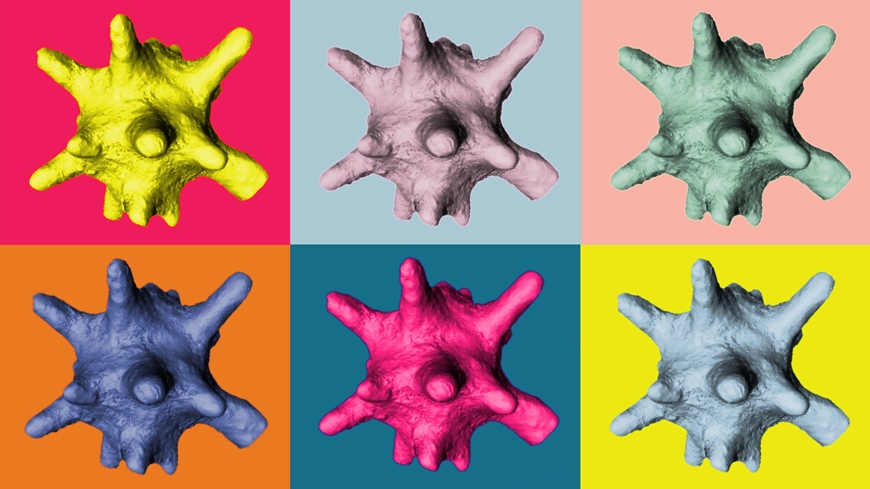Novel diagnostics for kidney stones
Illuminated in the dark
The best way to treat kidney stones depends on how what they are composed of and how they are shaped. Empa researchers are now working on a painless diagnostic procedure using dark-field X-ray imaging. This innovative technology makes it possible to determine the structure and composition of the stones for each patient. The Maiores Foundation as well as a second foundation are supporting the recently launched project.

Those affected report severe pain: Although kidney stones can go unnoticed for a long time, for many people they cause discomfort at some point in their lives. More than five percent of the population suffer from these multifaceted crystals. The most suitable therapy for this widespread disease depends on the stones' shapes and chemical composition. "Sometimes, however, the type of stone can only be identified once it has been removed by surgery," explains Robert Zboray from Empa's Center for X-ray Analytics.
Such a (costly) operation is not always necessary, though. In some cases, a far more cost-effective change in eating and drinking habits is sufficient. Empa researchers are developing a new diagnostic procedure based on advanced X-ray technologies to ensure that the right treatment – i.e. one that is tailored to each individual patient – is being applied. The new project has recently received support of the Maiores Foundation in Liechtenstein and a second foundation.
Precise and efficient
Zboray and his team are looking for biomedical imaging methods that can be used to determine the content, shape and position of kidney stones precisely, cost-effectively and painlessly. Dark-field X-ray imaging is particularly suitable for this. This innovative, multimodal technology uses scattered radiation, which is produced by the interaction of X-rays and kidney stones, on the one hand, and direct radiation, which simultaneously produces a conventional X-ray image, on the other. The combination of the two types of images enables a particularly sensitive determination of the composition of the stone. This even makes it possible to visualize nearly transparent objects as well as fine details of the microstructure. "Our goal is to be able to convert standard X-ray machines in GP offices and hospitals to the new dark-field technology as cost-effectively as possible," says the Empa researcher.
Private support that makes the difference
The "Empa Zukunftsfonds" is looking for private funding for pioneering research projects that are not yet supported otherwise. If you would also like to give an additional boost to our research, you can find more information here: www.empa.ch/web/zukunftsfonds
Dr. Robert Zboray
Center for X-ray Analytics
Phone +41 58 765 46 02
Loris Pandiani
Empa Zukunftsfonds
Phone +41 58 765 47 03
loris.pandiani@empa.ch






